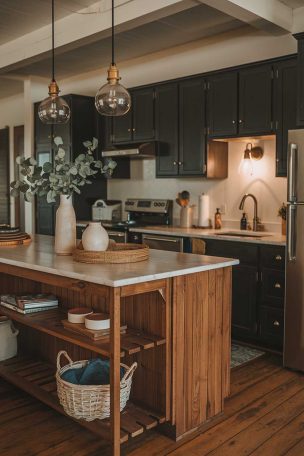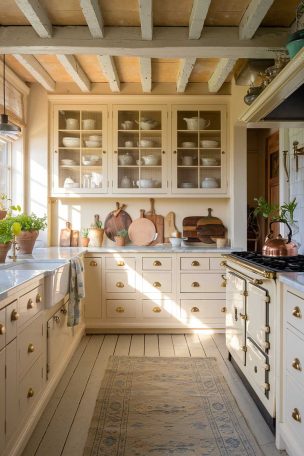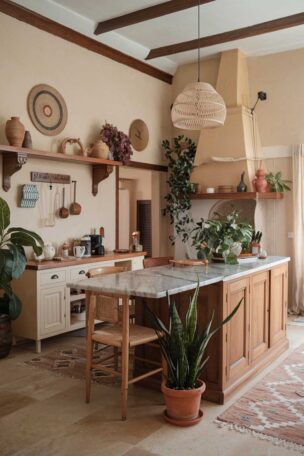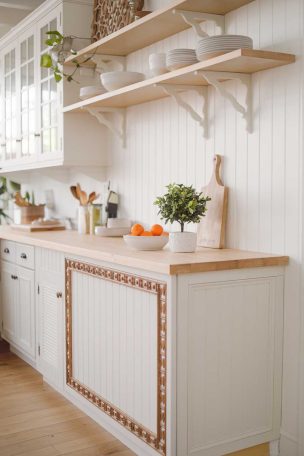Japandi kitchen design merges Japanese minimalism with Scandinavian functionality.
This fusion style combines clean lines, natural materials, and neutral colors, creating spaces that radiate tranquility and purpose.
These kitchens serve as peaceful sanctuaries for cooking and gathering.
Natural Wood and White Harmony
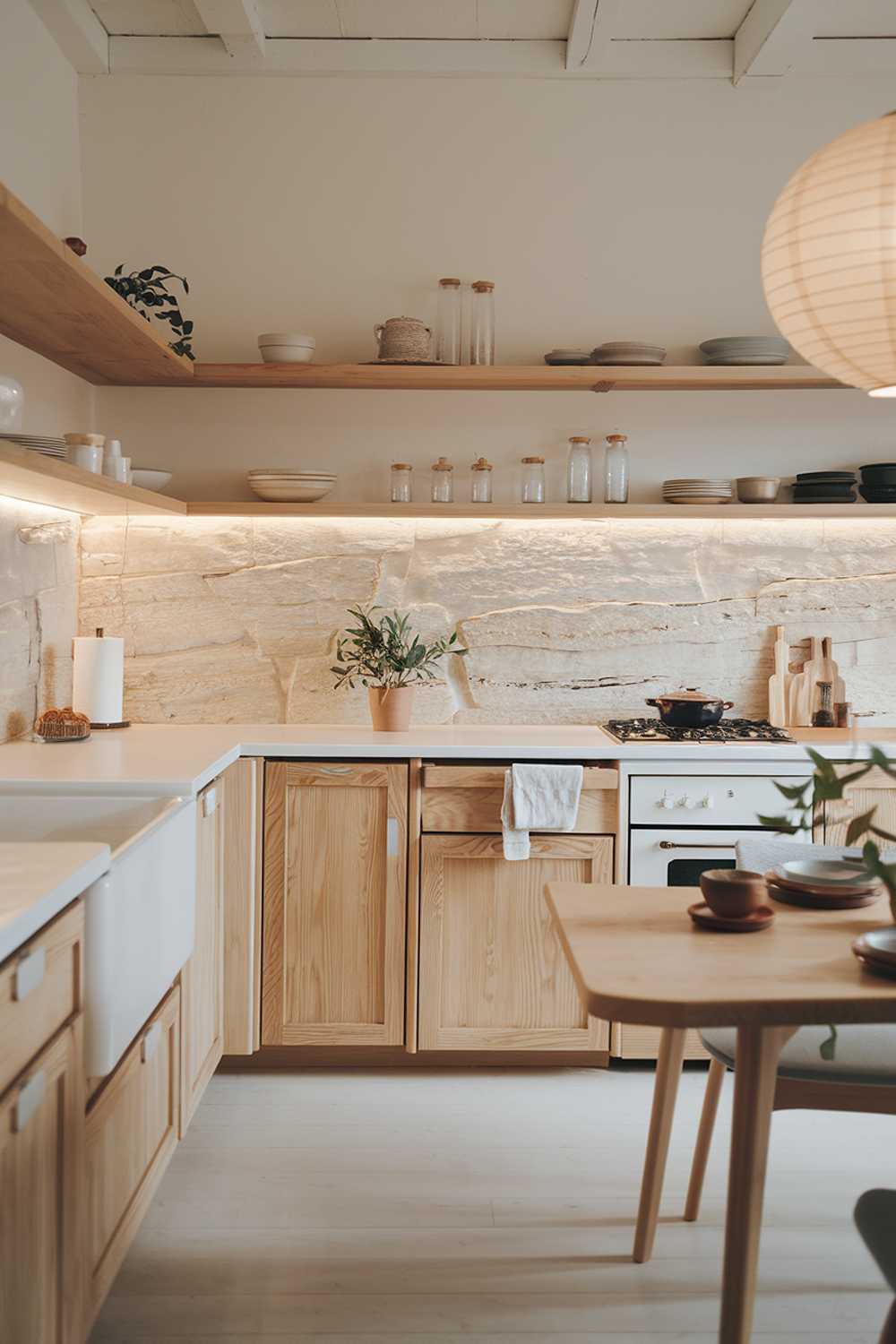
Natural wood cabinets pair with matte white countertops in perfect balance.
The textured stone backsplash adds depth, while open wooden shelving creates an airy feel.
Light oak flooring grounds the space. A touch of greenery brings life to this thoughtful design.
Cozy Minimalist Haven
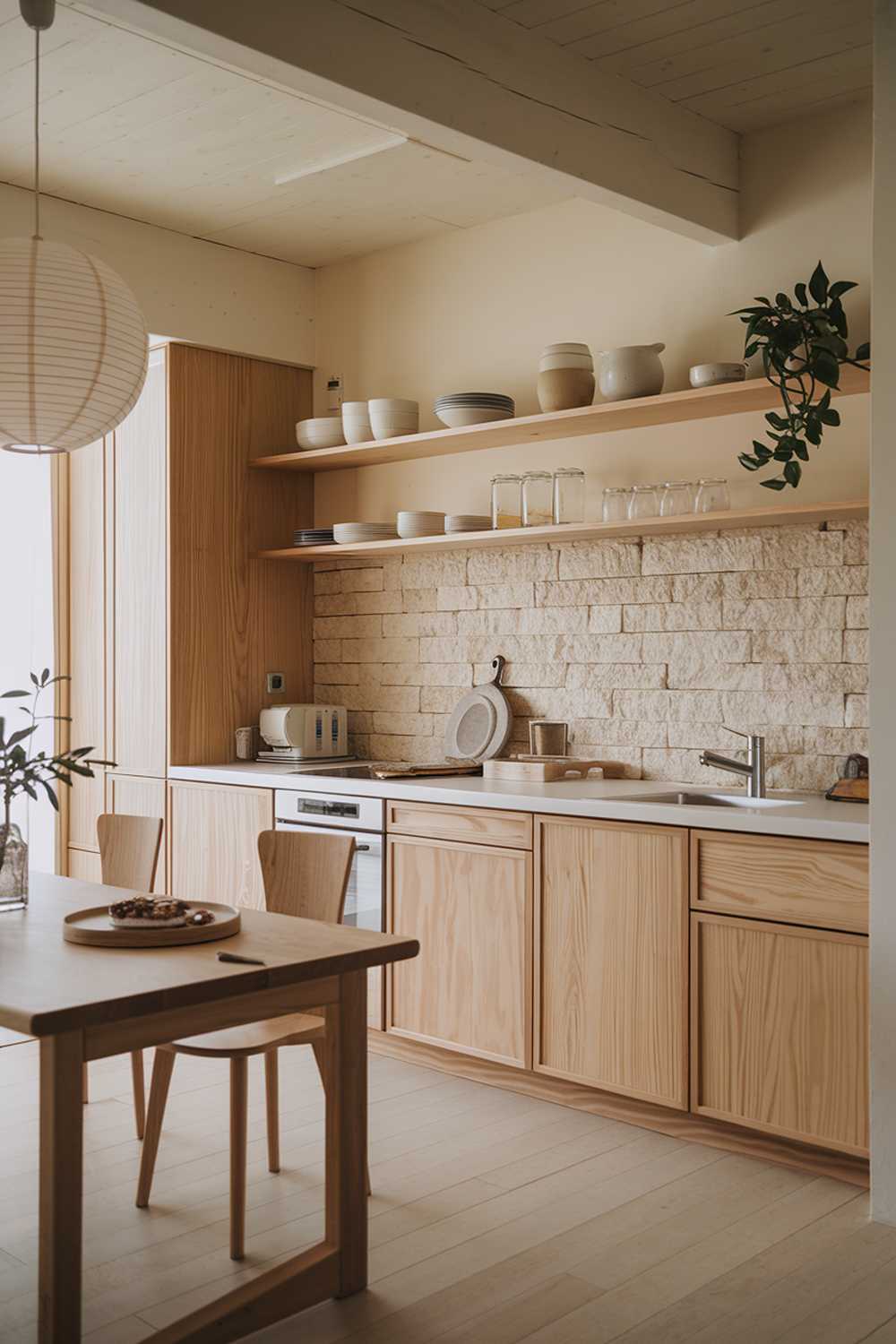
A paper lantern pendant light casts a soft, welcoming ambiance above the wooden dining table.
In this balanced design, minimalism meets warmth.
The clean lines of the cabinetry maintain order.
Natural textures invite touch and interaction, making the space feel lived-in.
Simple Elegance in Wood and White
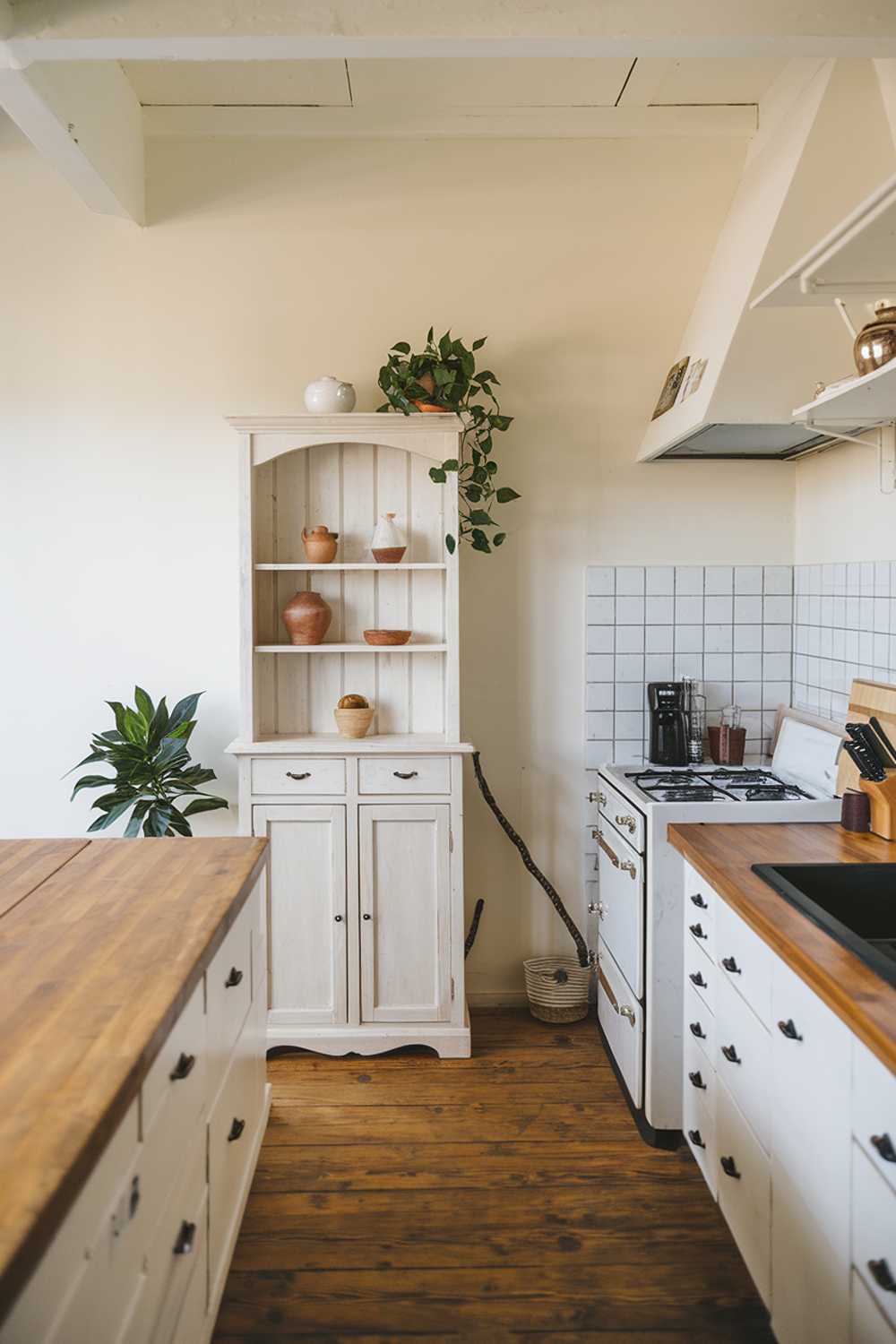
Wood and white create a refined palette.
The wooden countertop pairs with white cabinetry, while the black sink adds necessary contrast.
Wooden flooring maintains visual consistency throughout the space.
A small potted plant introduces a natural element.
Warm Functionality
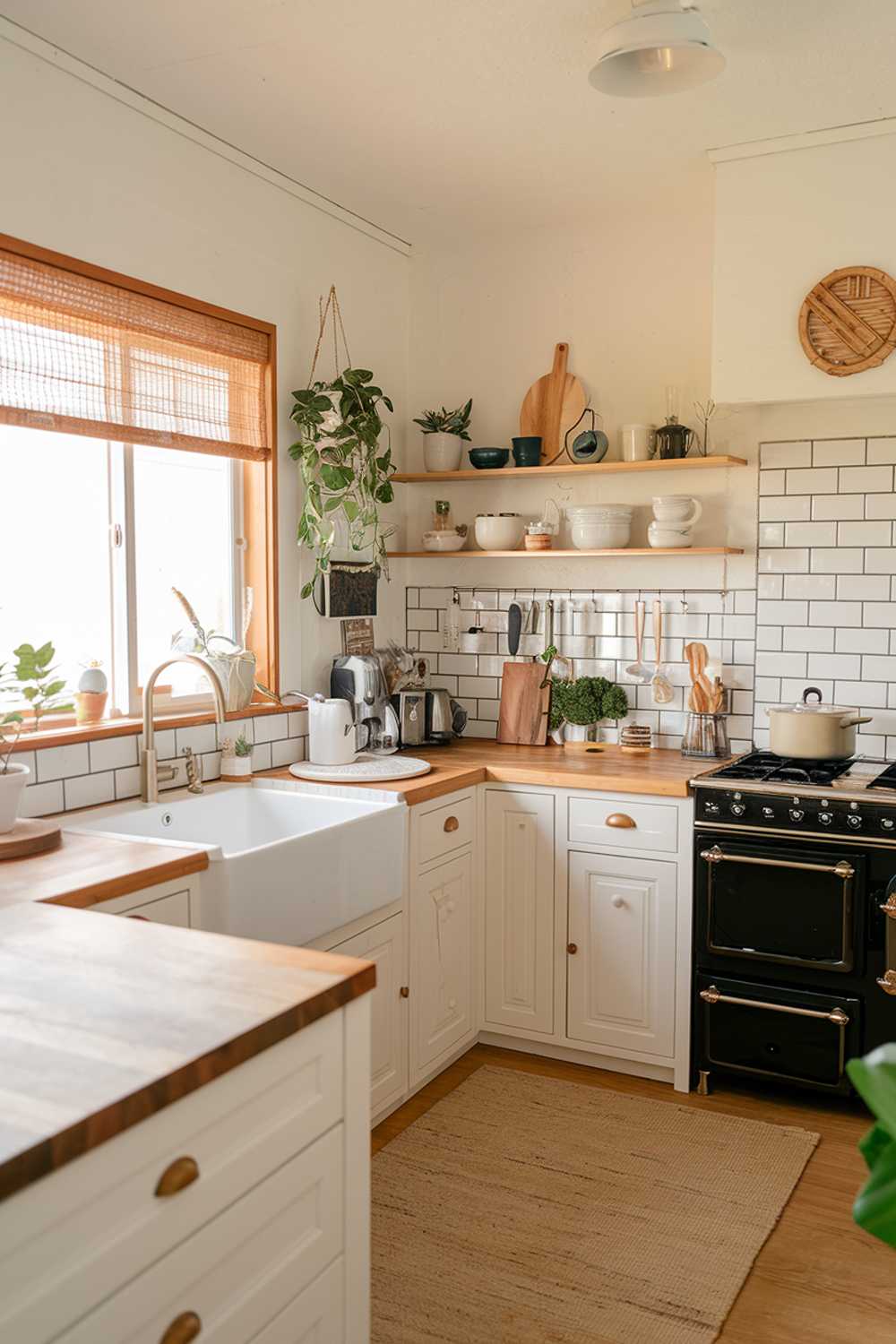
A beige rug softens the space.
The wooden shelf displays cooking utensils as functional art, transforming everyday items into design elements.
Plants add vitality, while the black stove grounds the lighter elements.
Mindful Storage Solutions
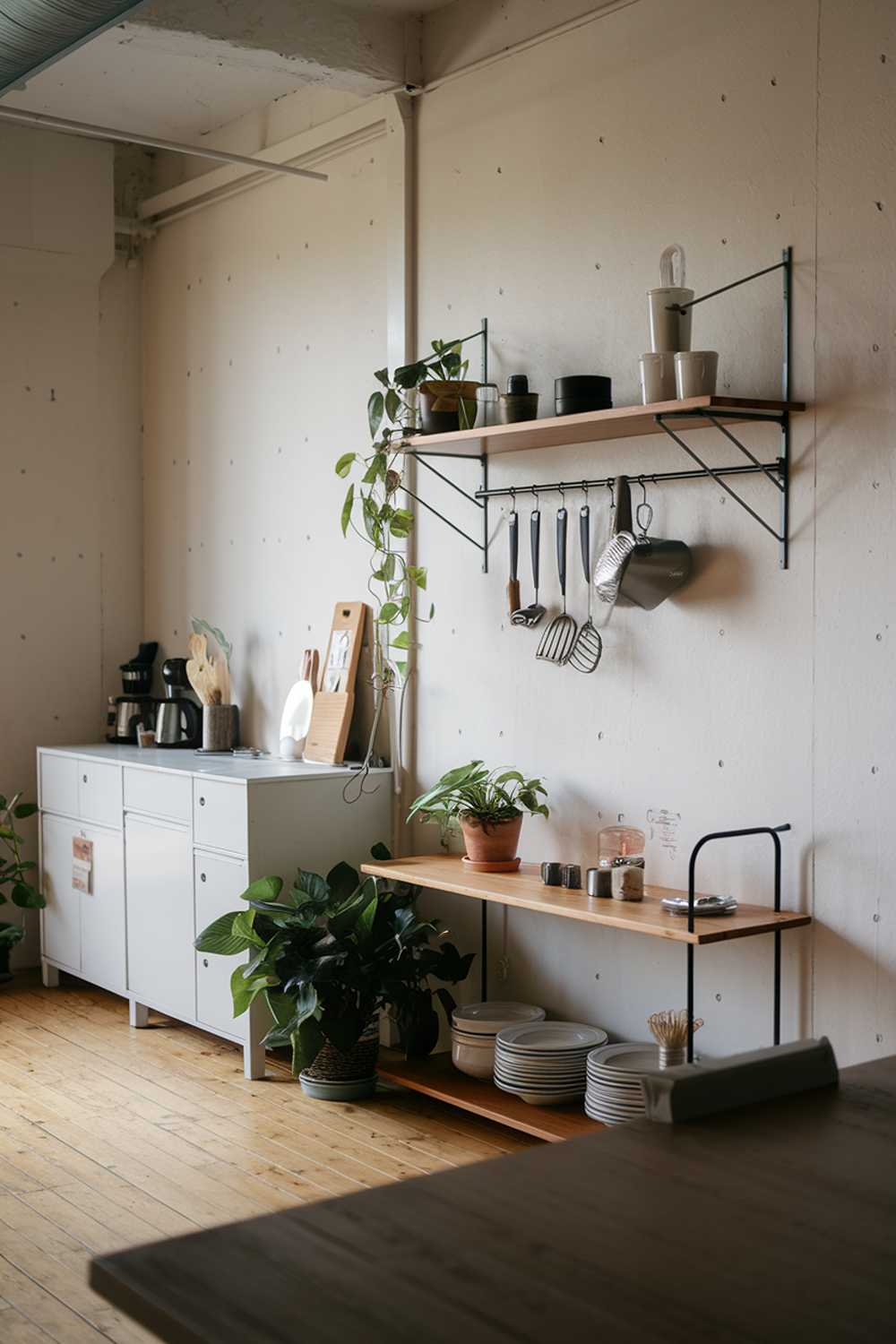
A wooden shelf serves both practical and aesthetic purposes.
Soft lighting creates an inviting atmosphere.
Thoughtful organization enhances the design, proving that storage can elevate a space.
Dark Accents and Natural Light
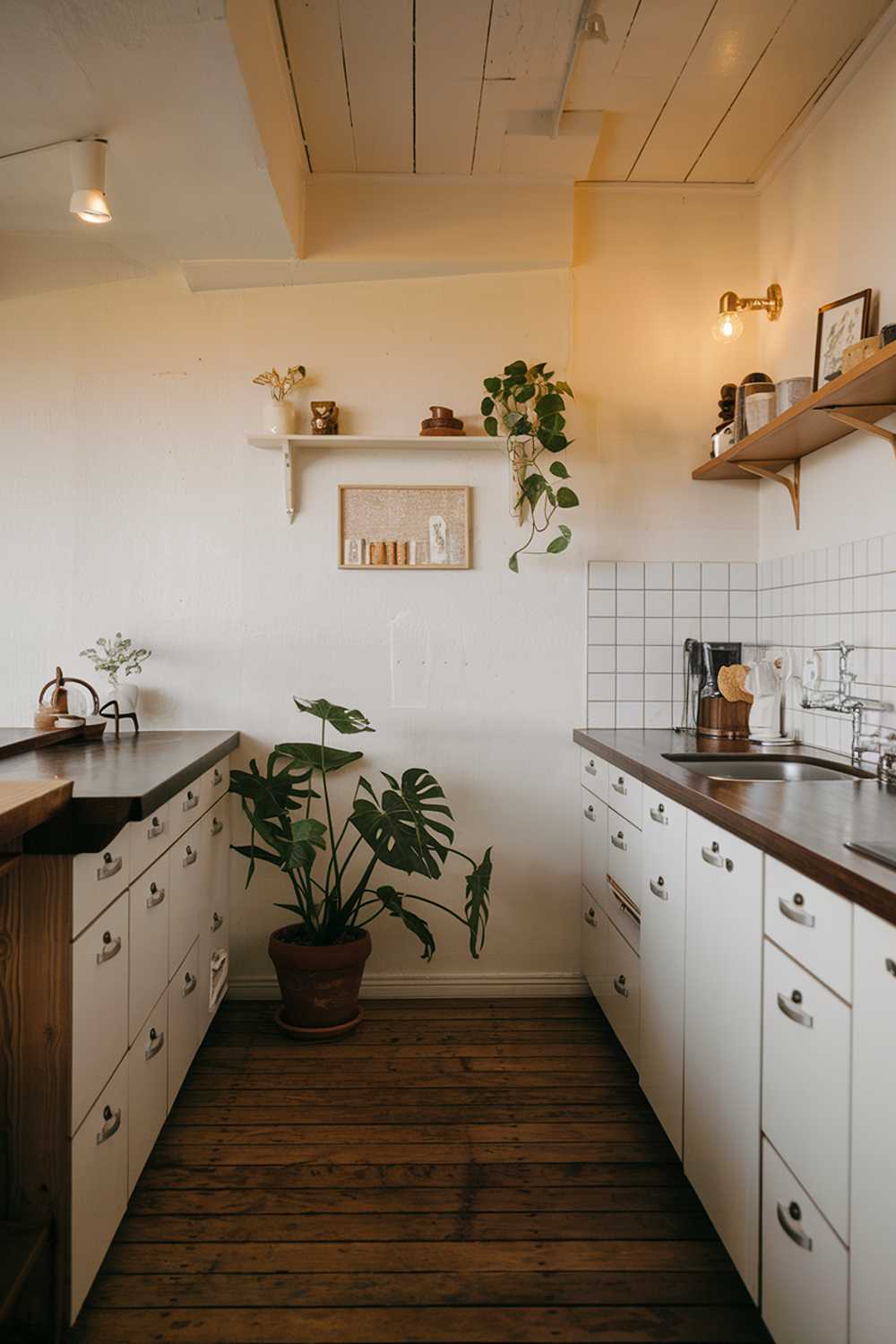
The dark countertop creates a striking contrast against the white cabinets.
Decorative items on wall shelves add personality without excess.
A potted plant near the sink connects the design to nature.
Modern Comfort
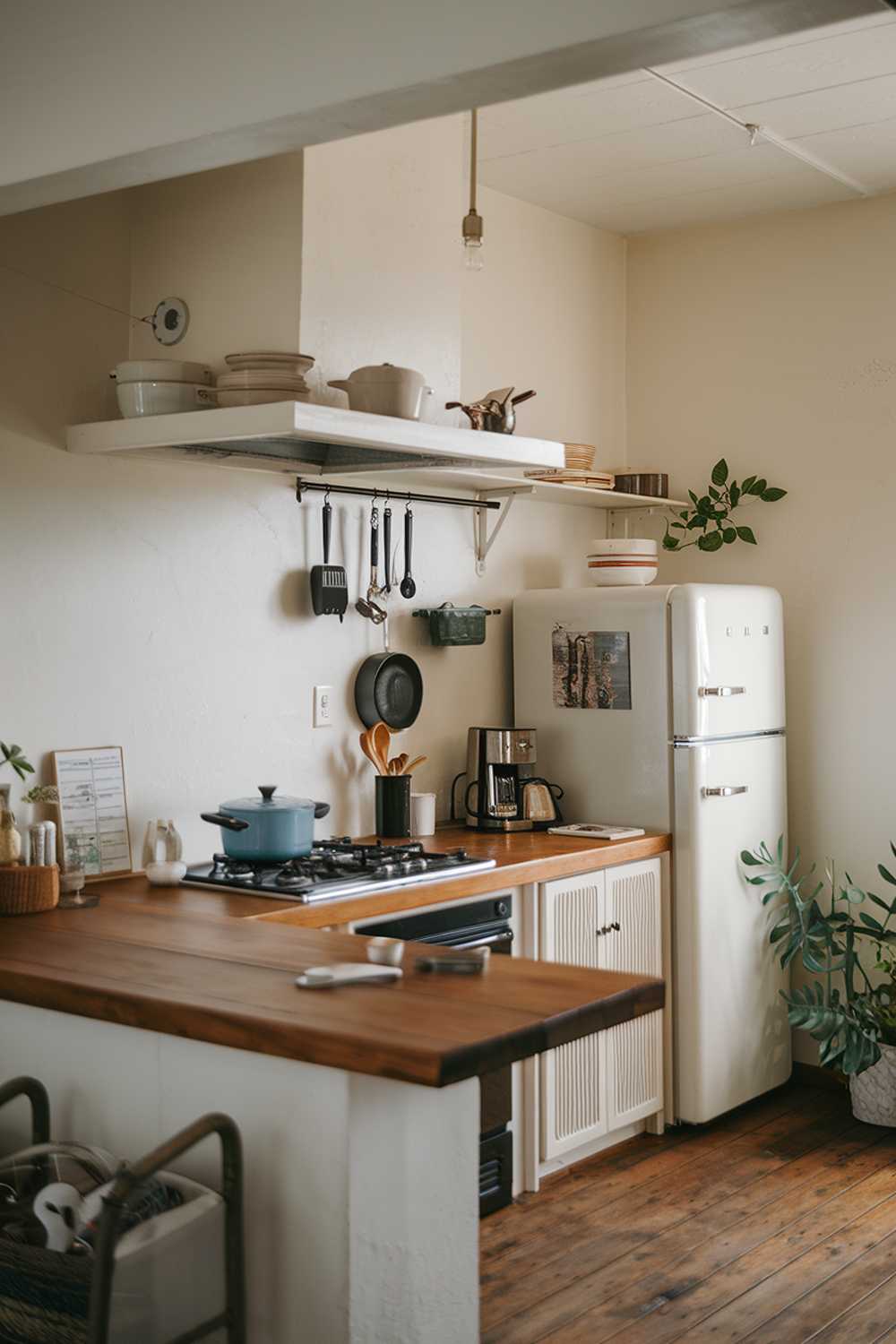
White walls provide a clean backdrop for wooden elements.
Practical appliances integrate seamlessly into the design, while soft lighting enhances comfort.
A small green plant adds freshness near the refrigerator.
Traditional Meets Modern
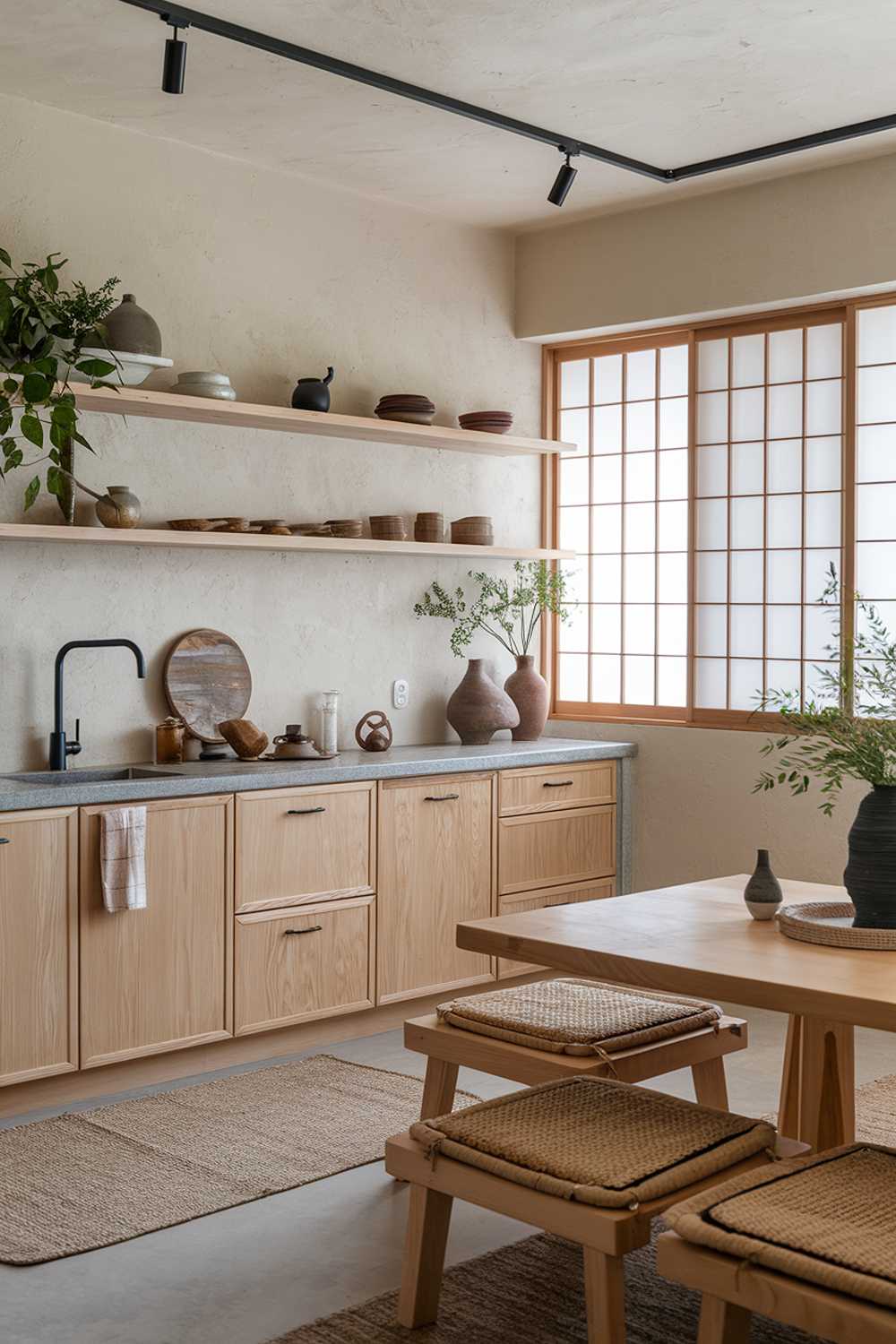
Natural light filters through the shoji-inspired window.
Woven straw cushions at the low-profile wooden dining table add authentic character.
Matte black fixtures provide a modern contrast to the natural elements.
Light and Space
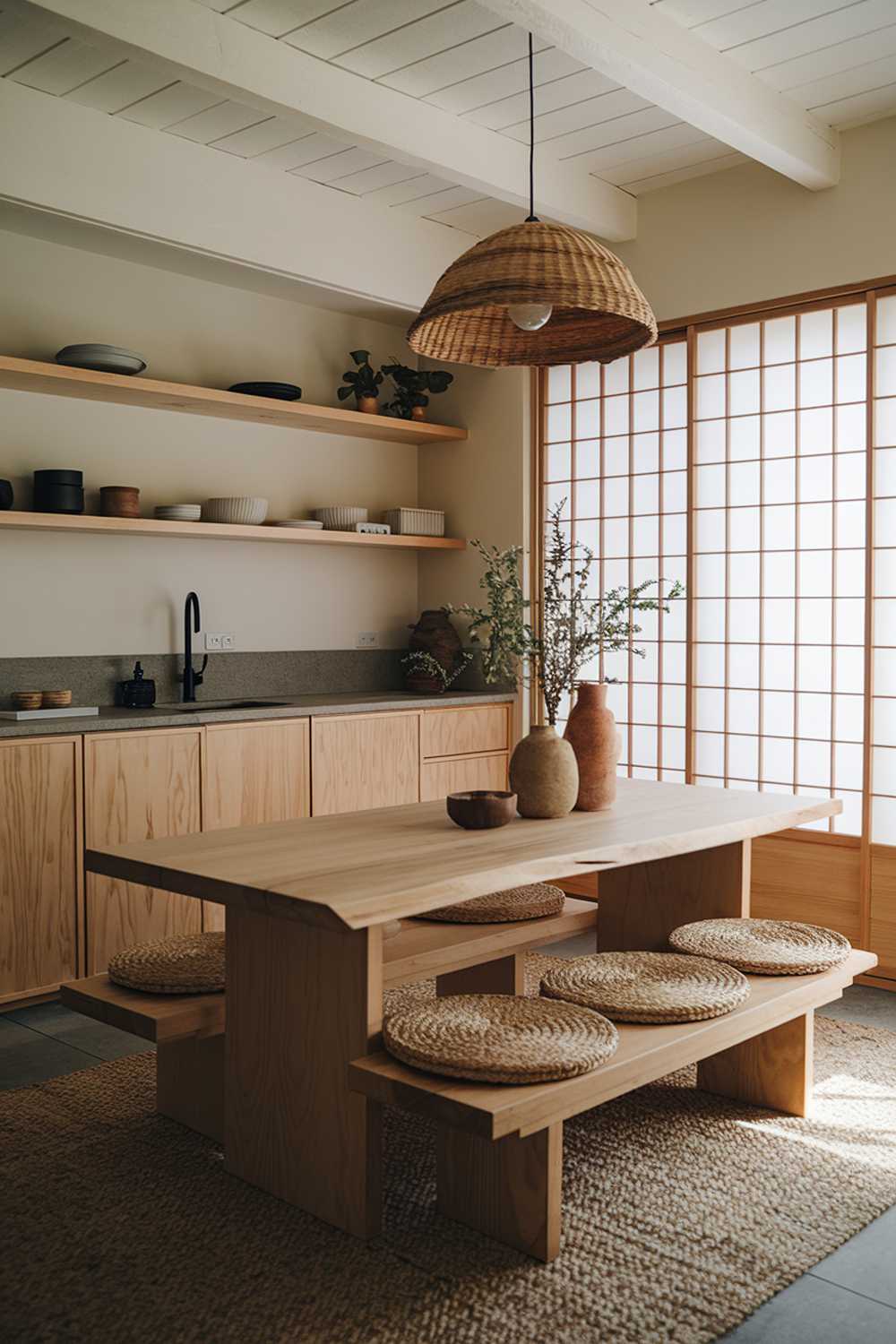
Open shelving maintains an expansive feeling.
Natural wood combines with stone to create textural interest.
Woven straw cushions introduce a handcrafted touch to the dining area.
Serene Neutrals
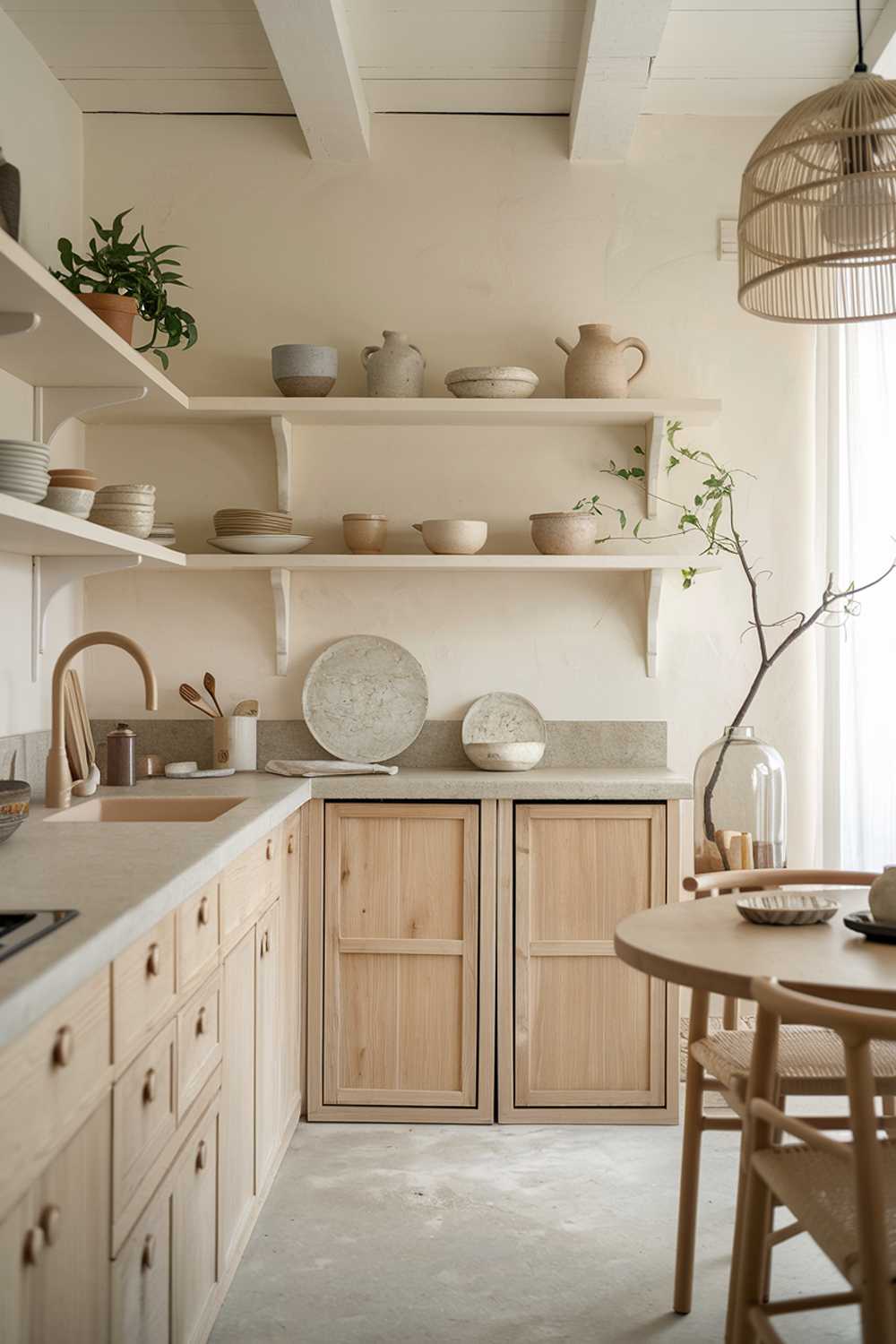
A rattan pendant lamp casts gentle shadows across the space.
Simple ceramic dishware adorns open shelving, maintaining clean aesthetics.
The glass vase with its single branch adds an artistic, natural element.
Balanced Elements
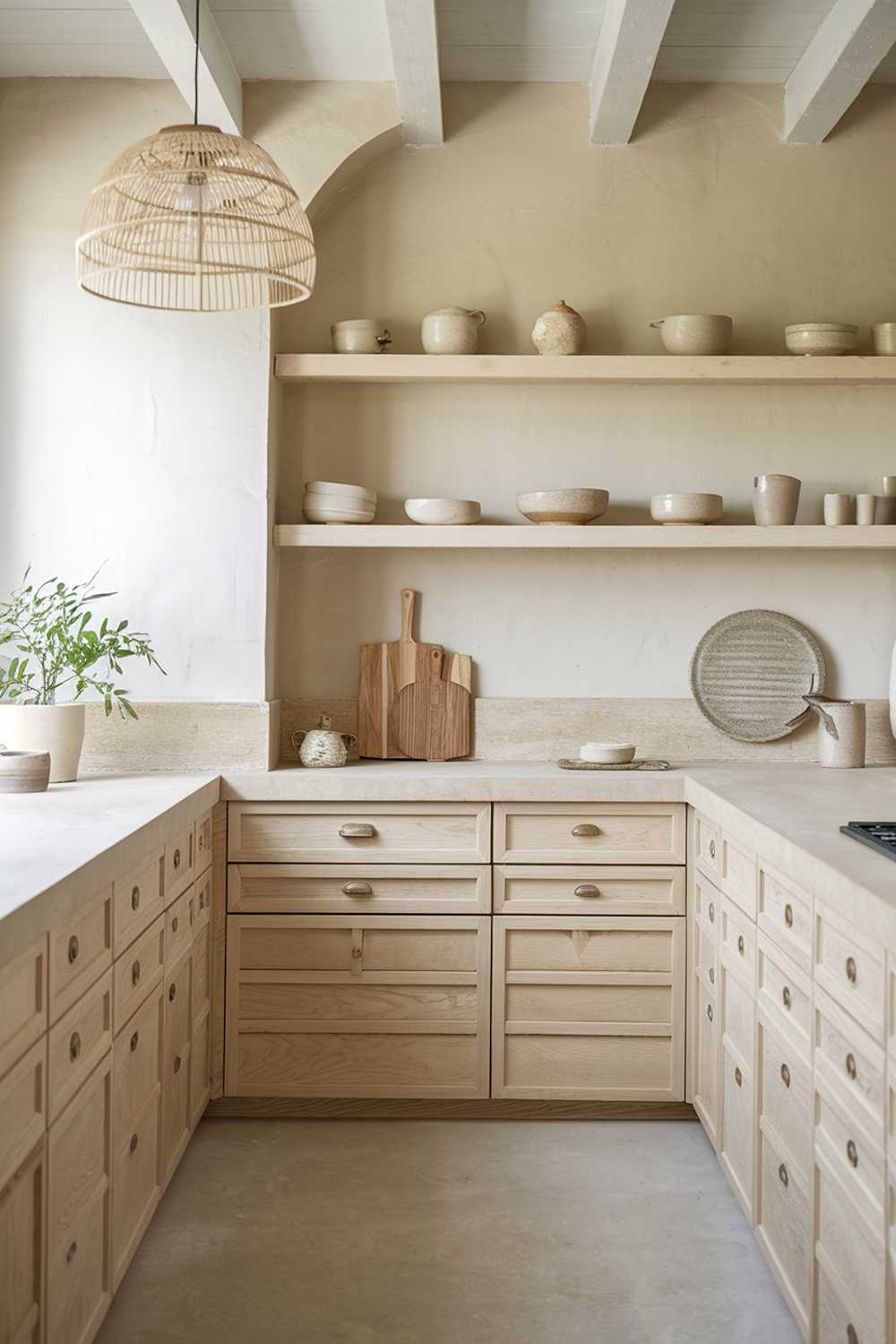
Clean lines in the cabinetry establish order.
The light stone countertop reflects natural light, brightening the entire space.
A rattan pendant lamp adds organic texture overhead.
Nature-Inspired Details
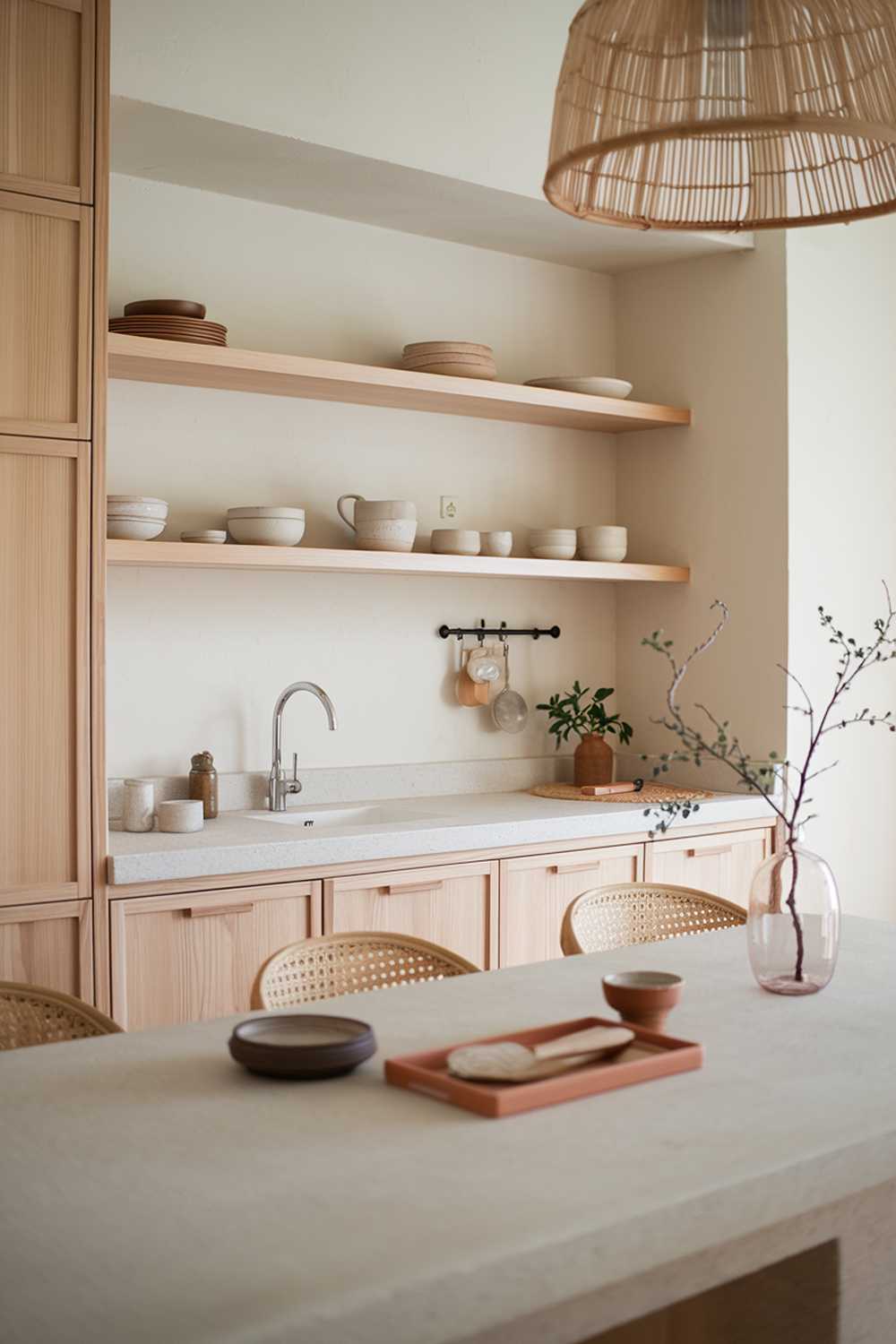
A neutral color palette creates calm.
Natural materials in the lighting fixtures complement organic elements throughout the space.
A branch in a glass vase introduces an artistic touch.
Textural Harmony
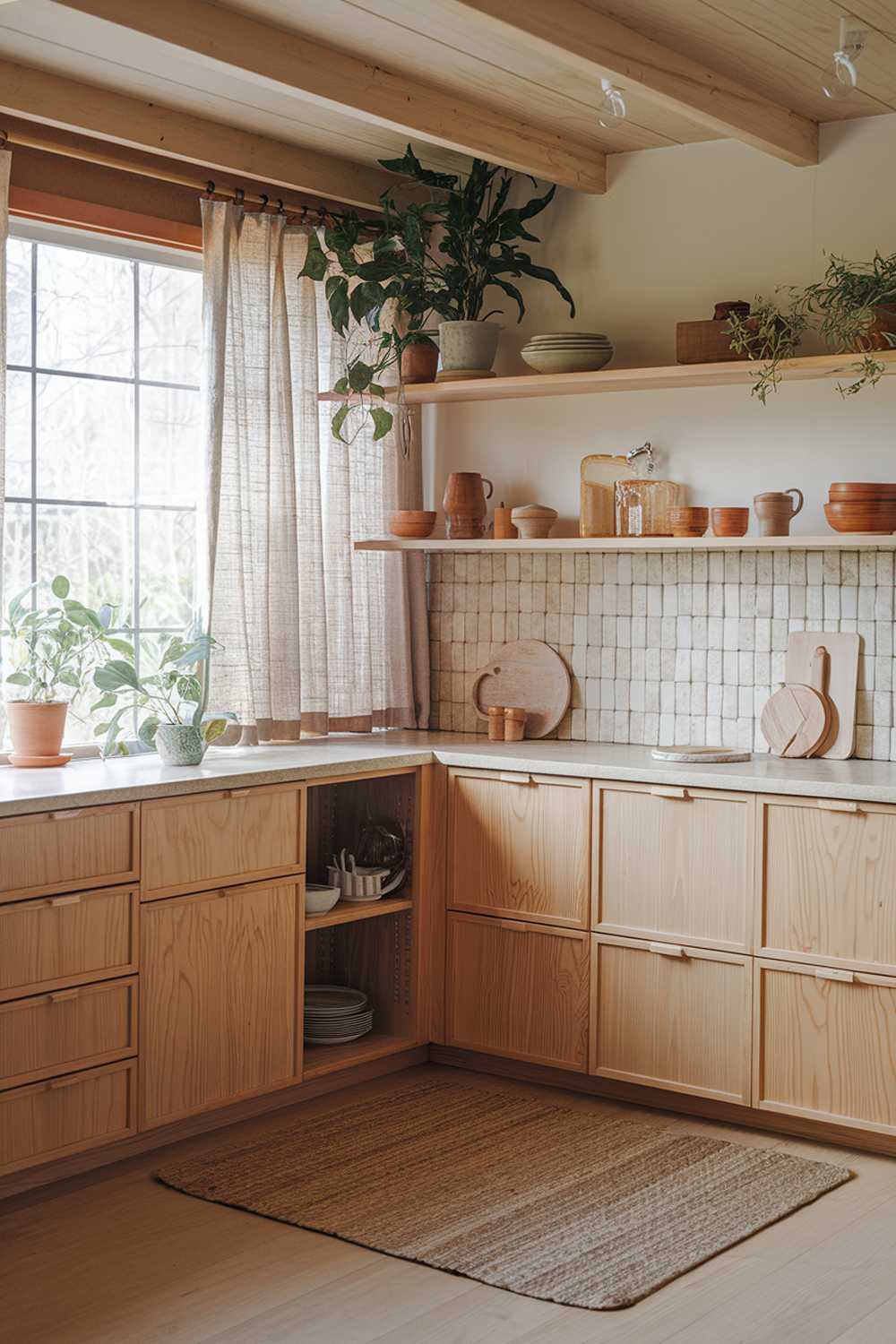
The textured ceramic backsplash provides subtle visual interest.
Bamboo kitchenware adds authentic character to the space.
A jute rug introduces another layer of natural texture.
Contemporary Balance
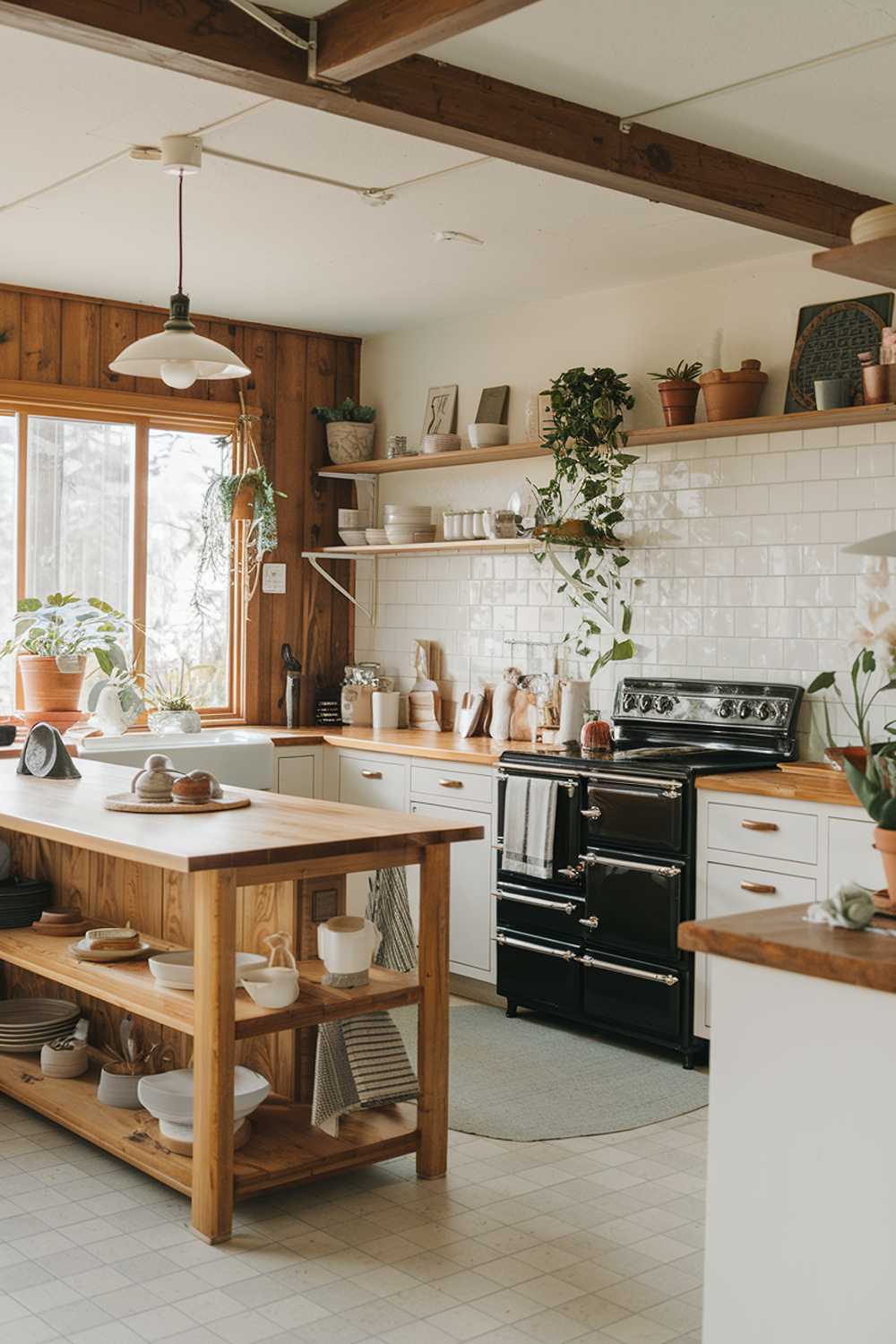
A wooden island with a white countertop anchors the space.
Light-colored tile flooring reflects light, expanding visual dimensions.
Each decorative item serves a purpose.
Intimate Dining Space
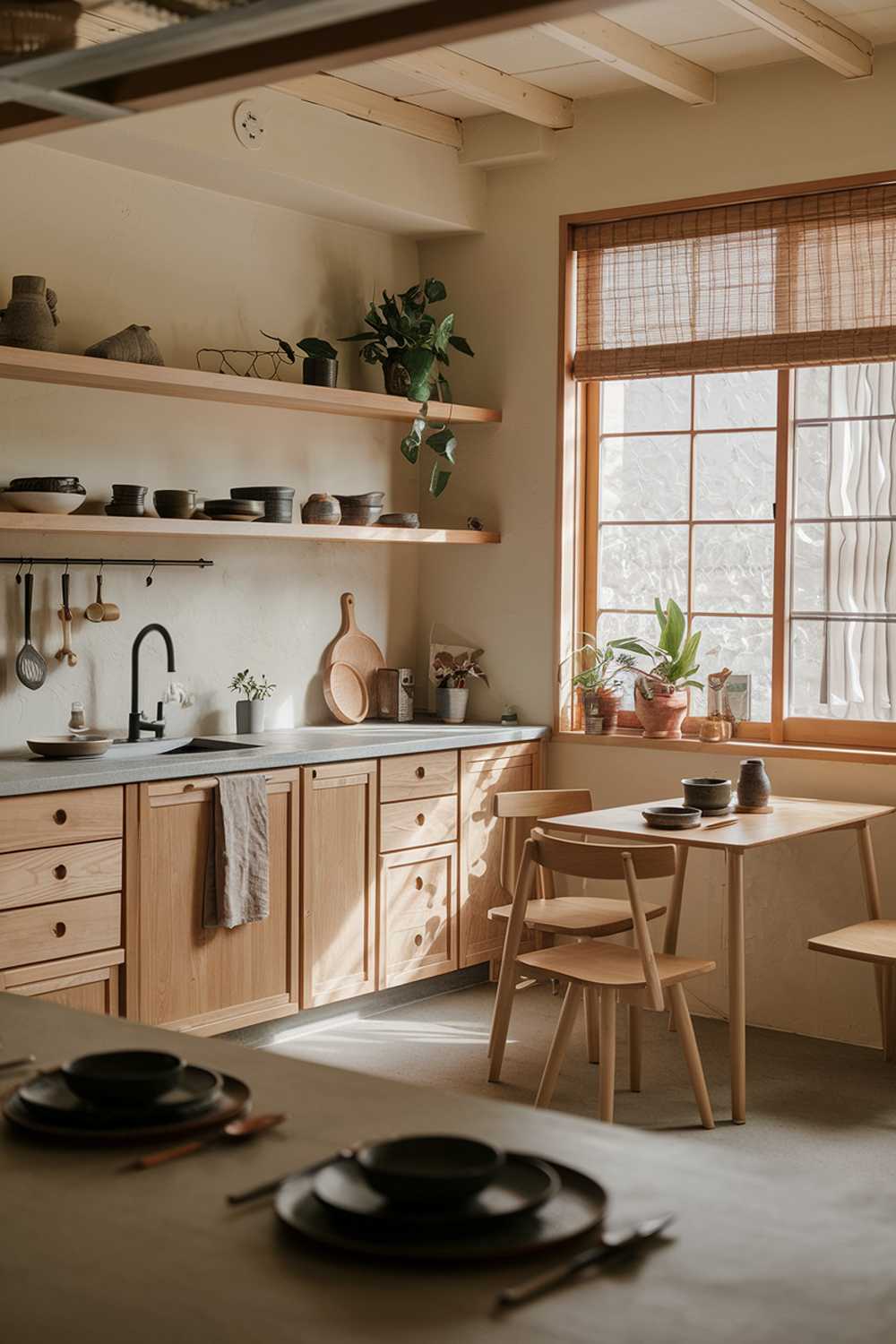
Light filters through the bamboo shade.
Simple chairs at the wooden dining table maintain minimalist aesthetics.
A linen kitchen towel adds subtle texture.
Crafted Details
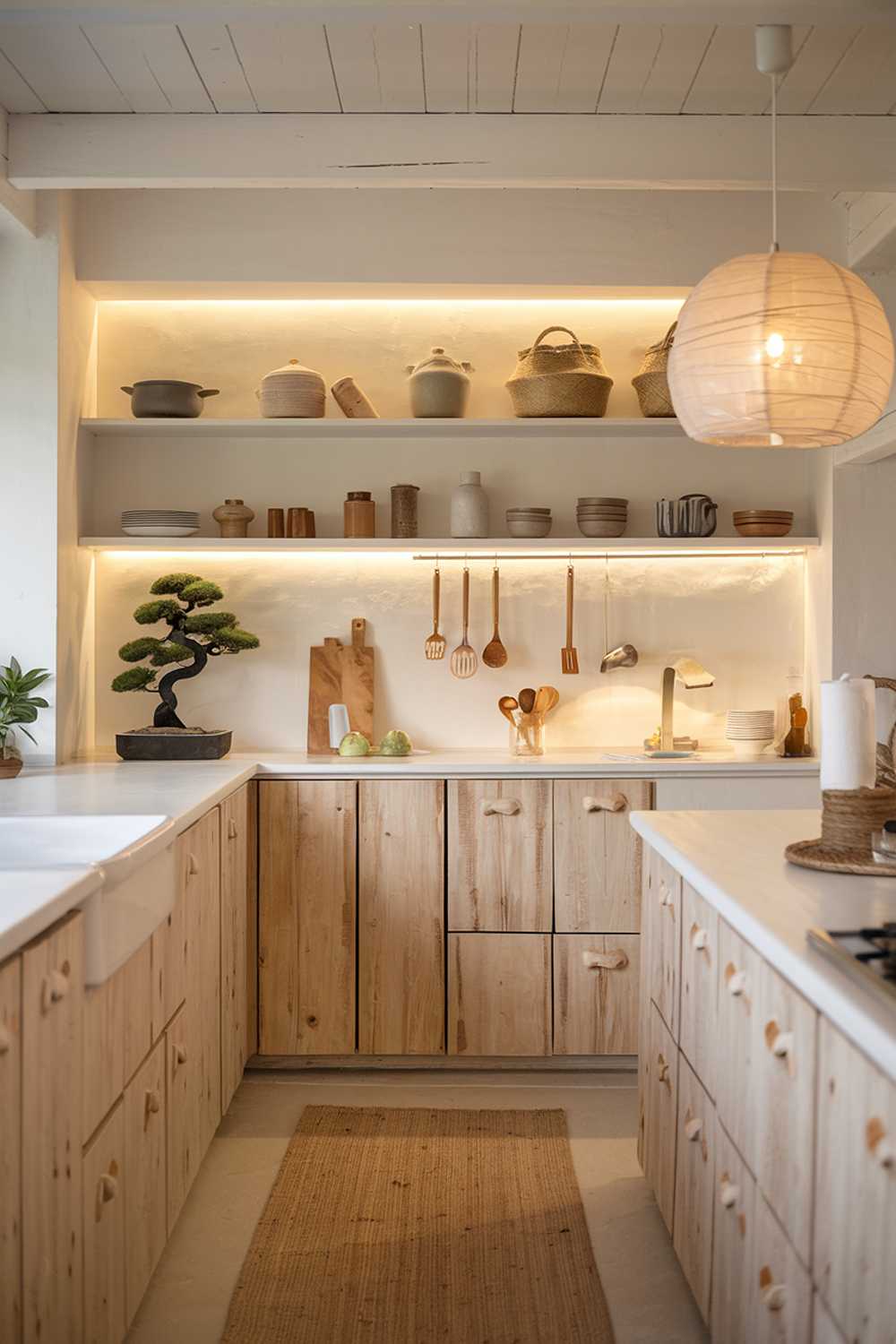
The rice paper pendant lamp radiates a soft glow.
Bamboo utensils and woven baskets introduce natural texture throughout the space.
A bonsai plant brings a traditional Japanese element.
Clean Lines and Natural Flow
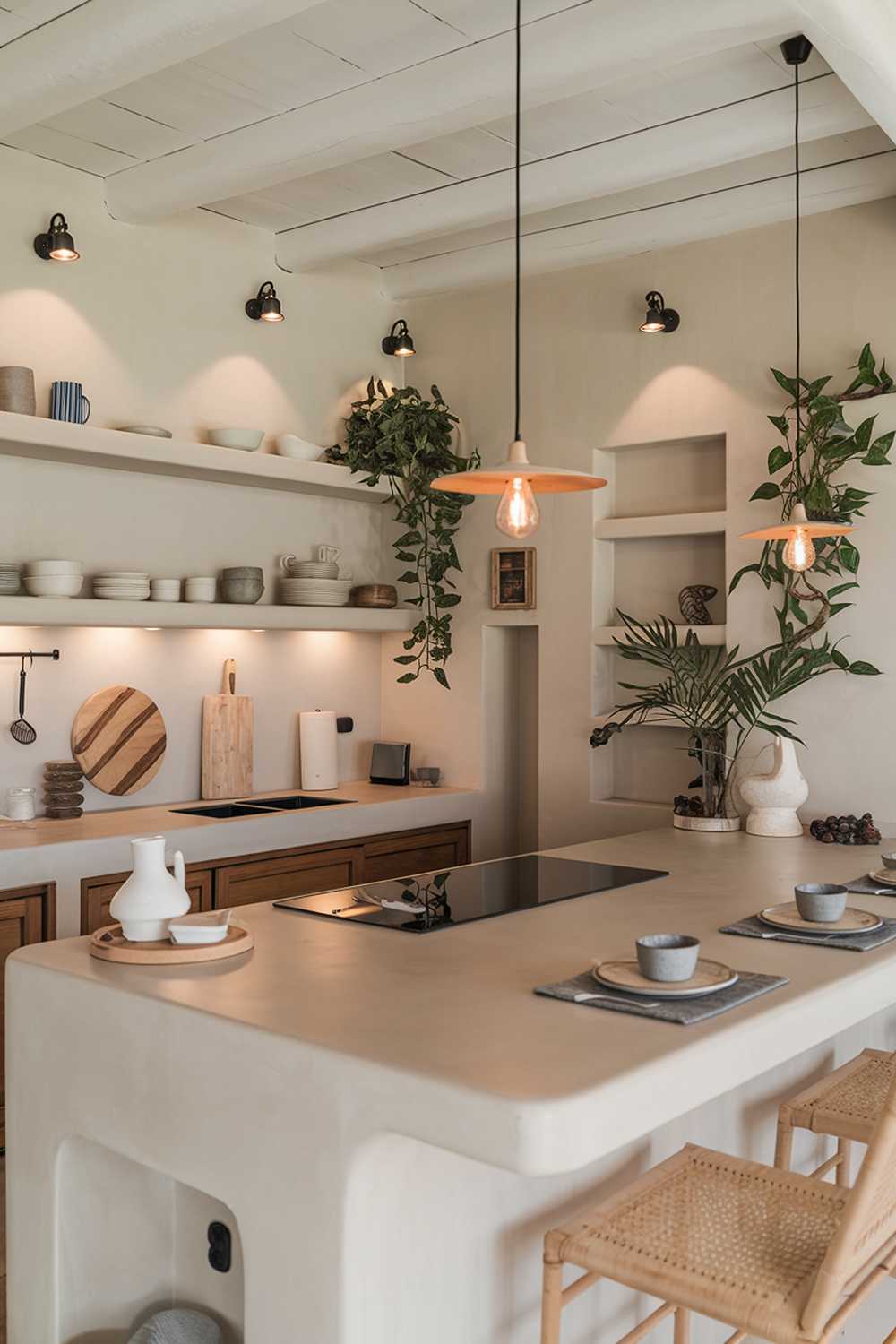
The spacious island offers ample workspace while maintaining visual lightness.
Pendant lights provide focused task lighting.
Indoor plants on open shelving soften minimal design elements.
Functional Beauty
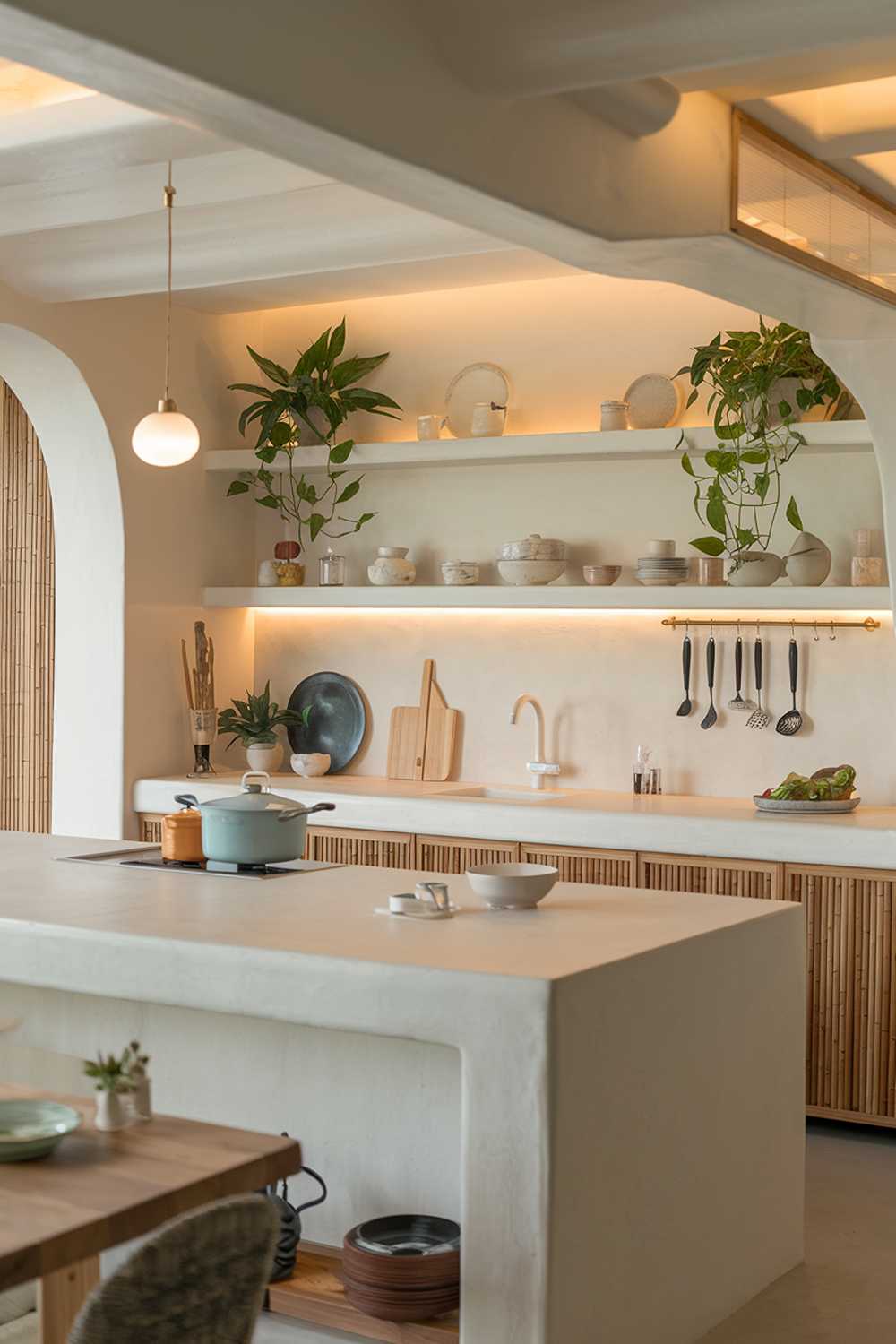
Natural materials enhance serenity.
Carefully selected kitchen utensils maintain a clutter-free aesthetic.
Open shelving displays items as design elements.
Mindful Space
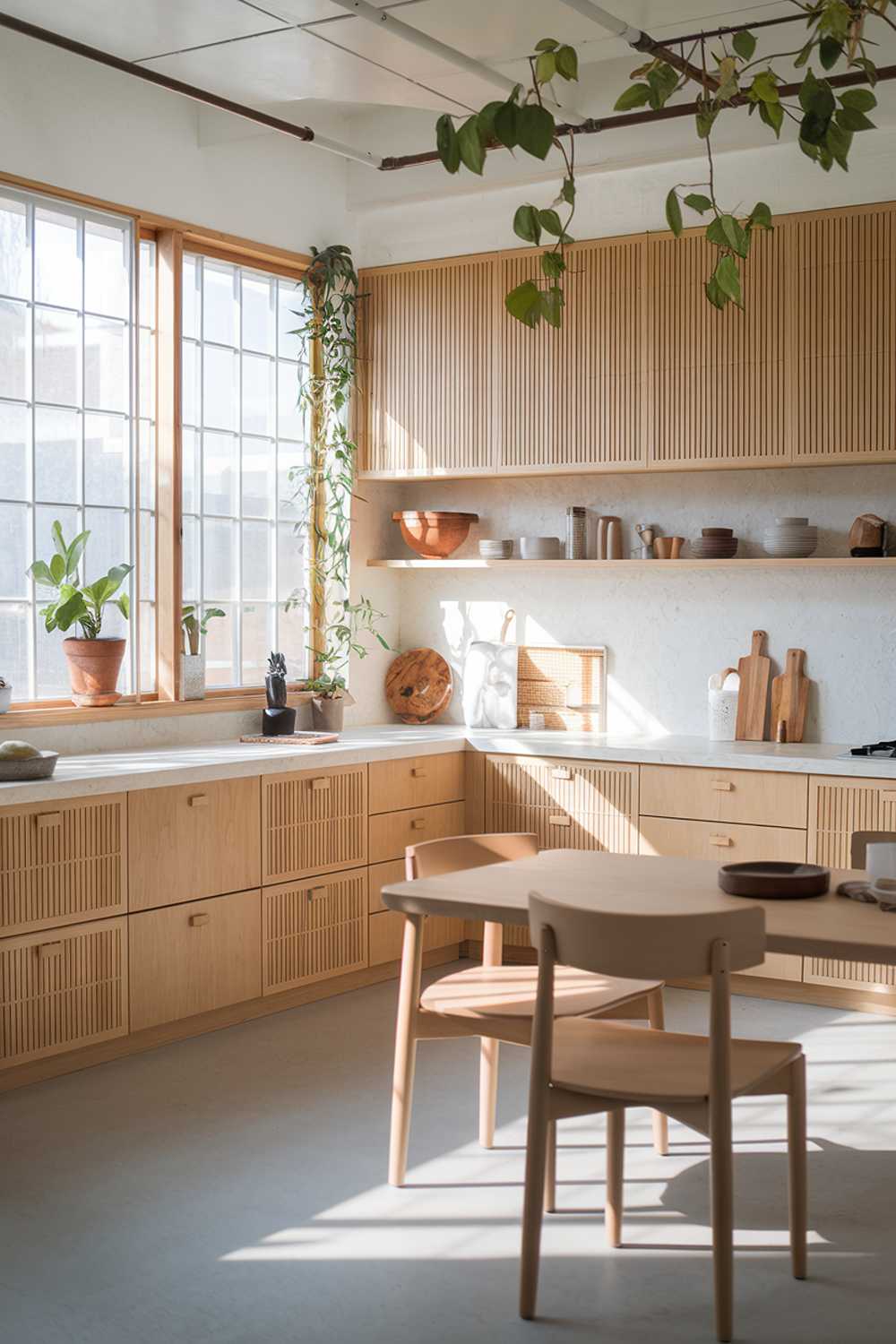
Natural light fills the space through large windows.
The simple wooden dining table encourages connection.
Bamboo accents maintain design consistency while adding warmth.
Craftsmanship Focus
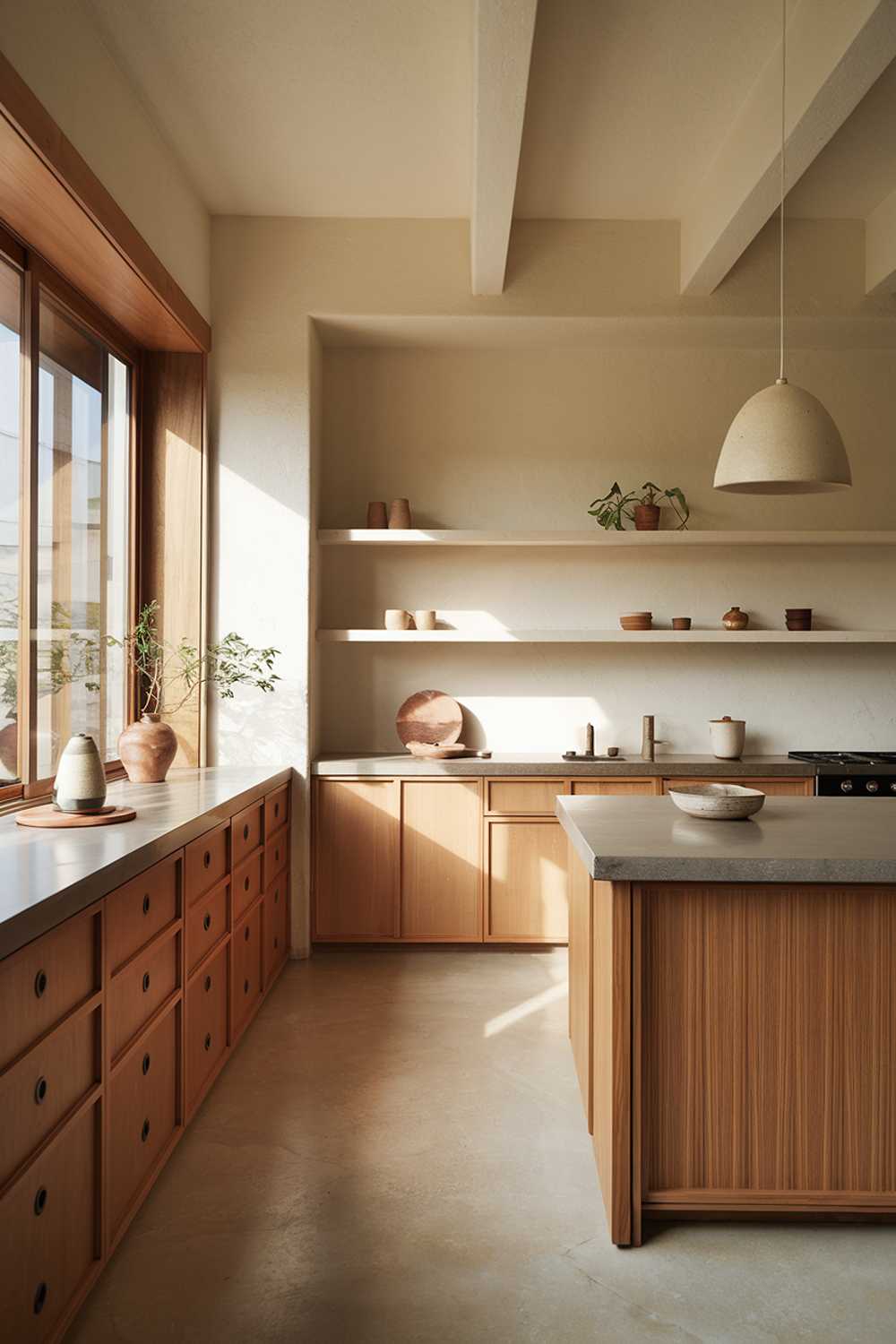
A large island with a smooth stone surface commands attention.
Minimalistic ceramic dishware on open shelves adds visual interest.
Earthy tones ground the space.
Organic Shapes
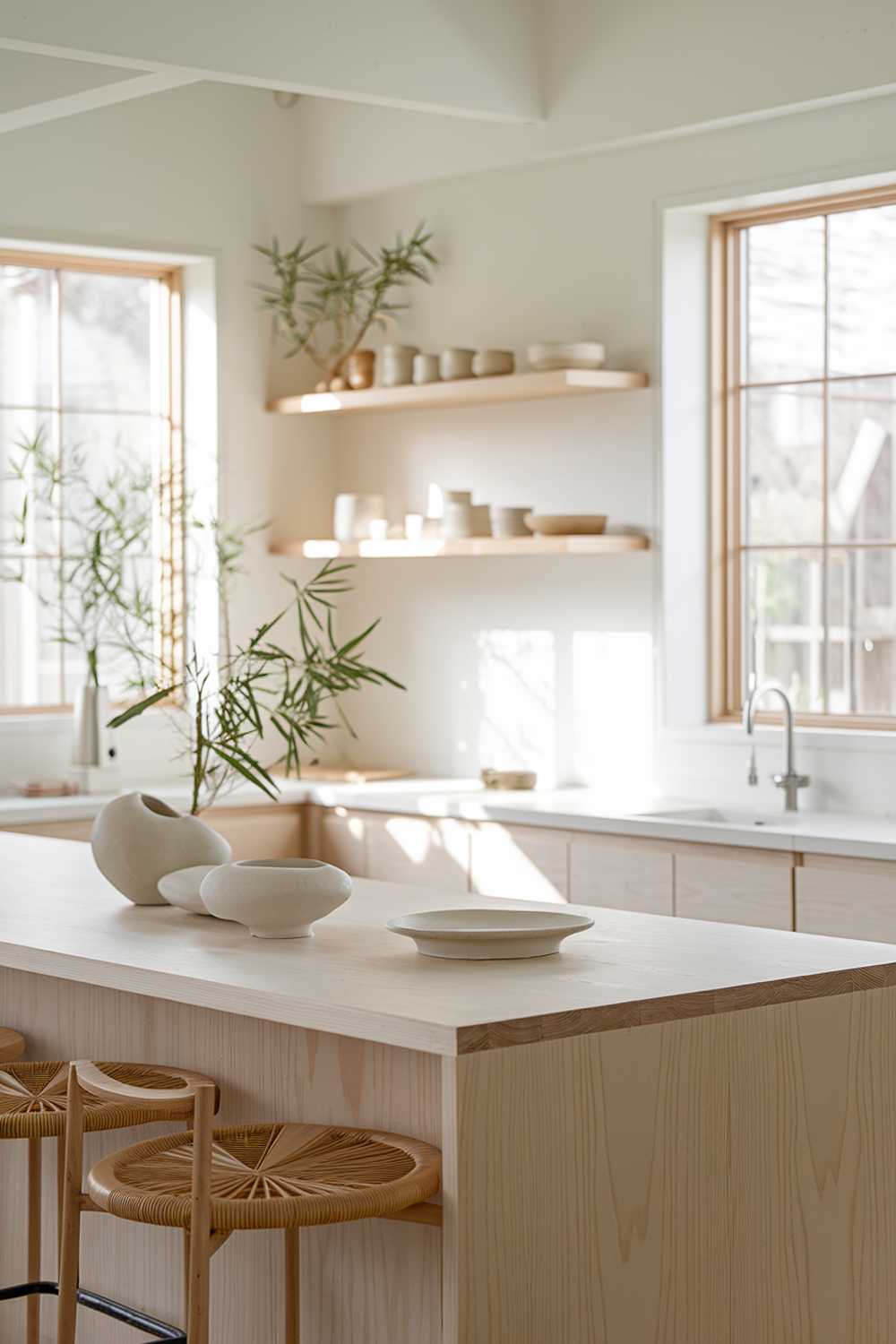
Organic-shaped ceramics complement the minimal design.
The light wood kitchen island provides a natural centerpiece.
Succulent arrangements introduce life and color.
Harmonious Layout
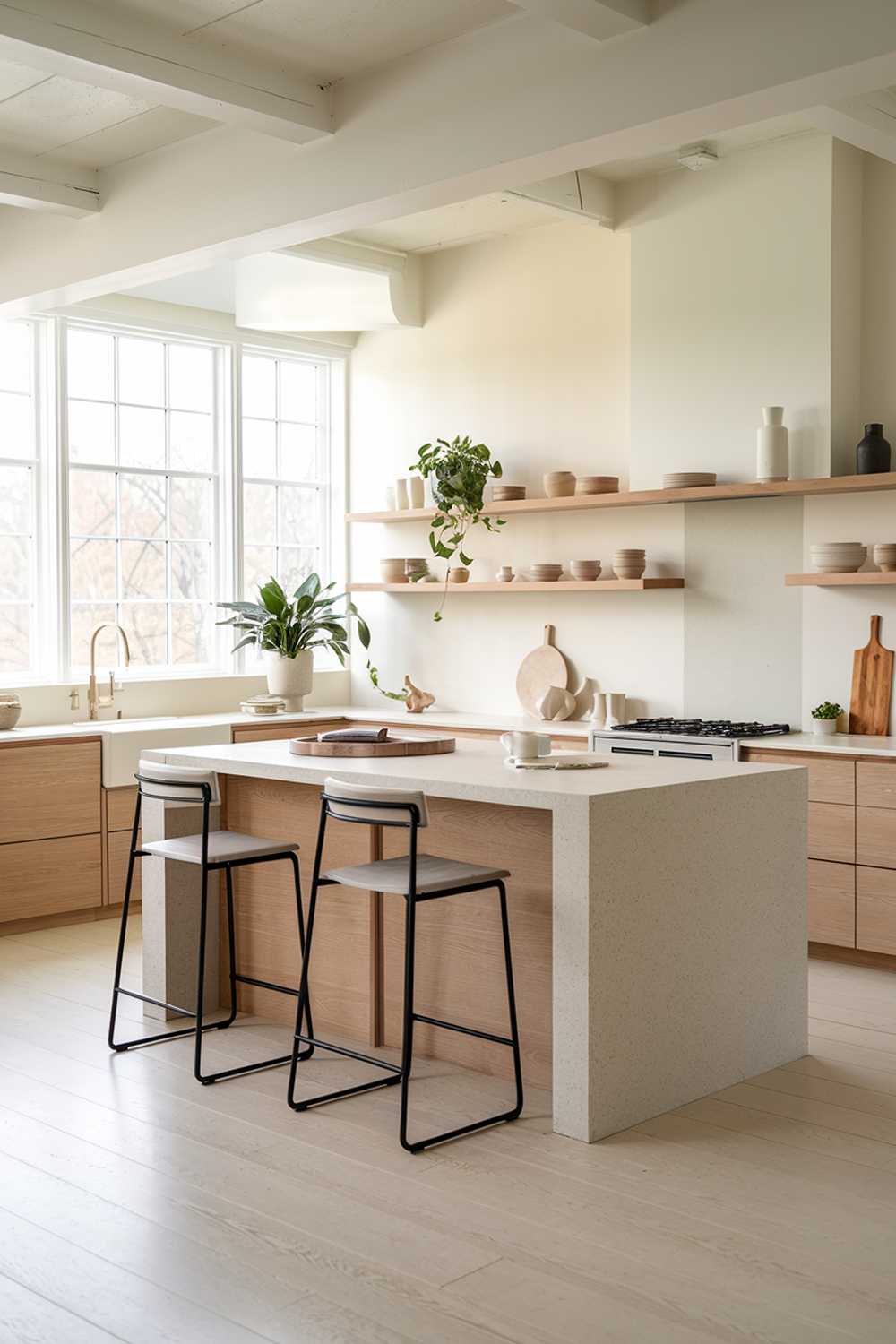
A pale stone surface on the central island complements light oak flooring.
Minimalist barstools offer comfortable seating.
Neutral textiles add warmth.
Inviting Atmosphere
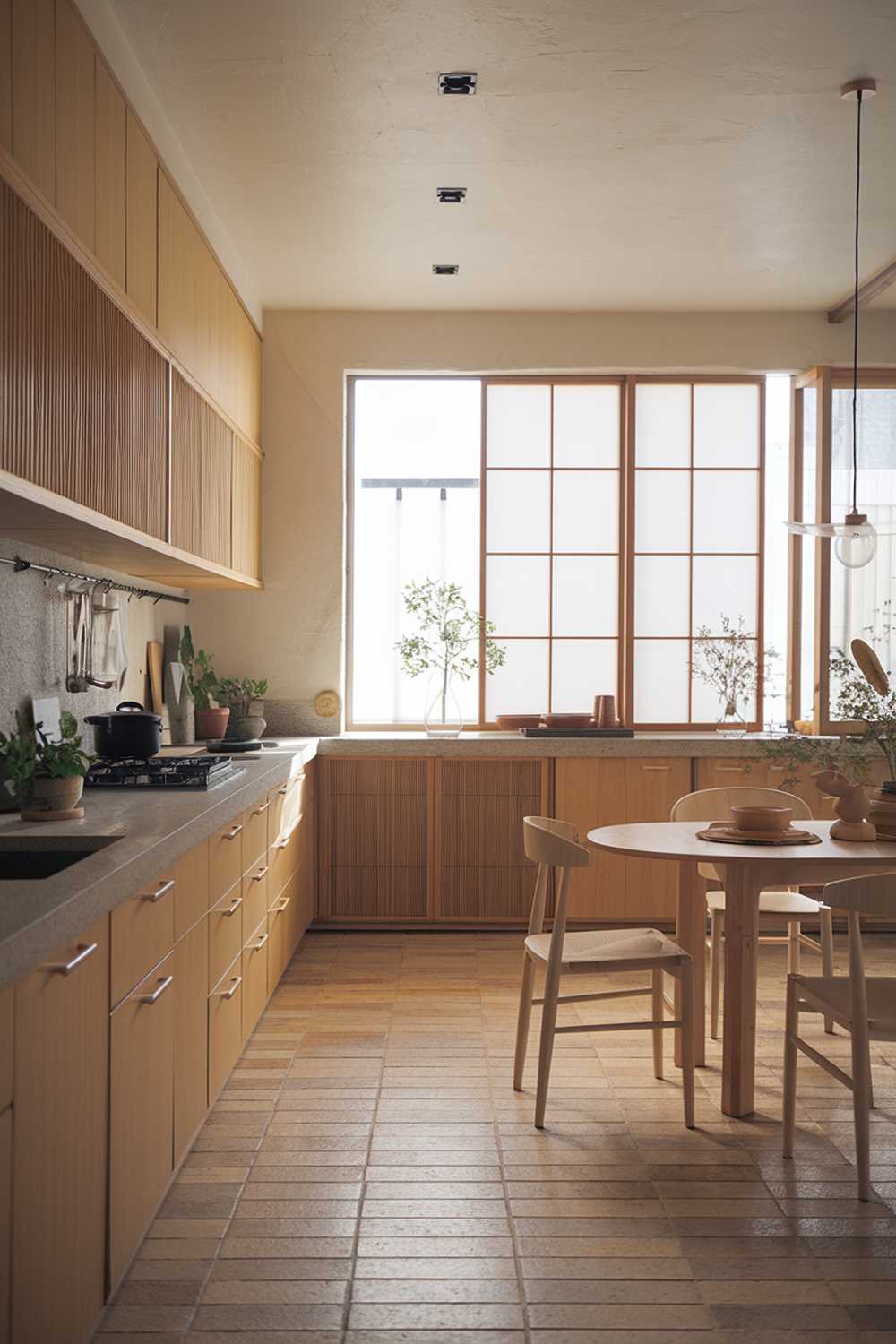
Stone countertops and bamboo accents create visual depth.
Neutral-toned tiles provide a sophisticated foundation.
A simple wooden table and chairs make the space truly livable.
Conclusion
Japandi kitchen design showcases the fusion of Japanese and Scandinavian interior design principles.
These kitchens demonstrate functionality and beauty in perfect harmony.
Thoughtful materials, careful planning, and mindful decoration create practical and peaceful spaces.


